Sonus Faber’s New Lumina Speakers Offer Ultra High-End Sound At an Affordable Price
The rarefied speaker brand–known for its six-figure audio systems–unveiled an entry-level speaker collection that’s definitely worth listening to.
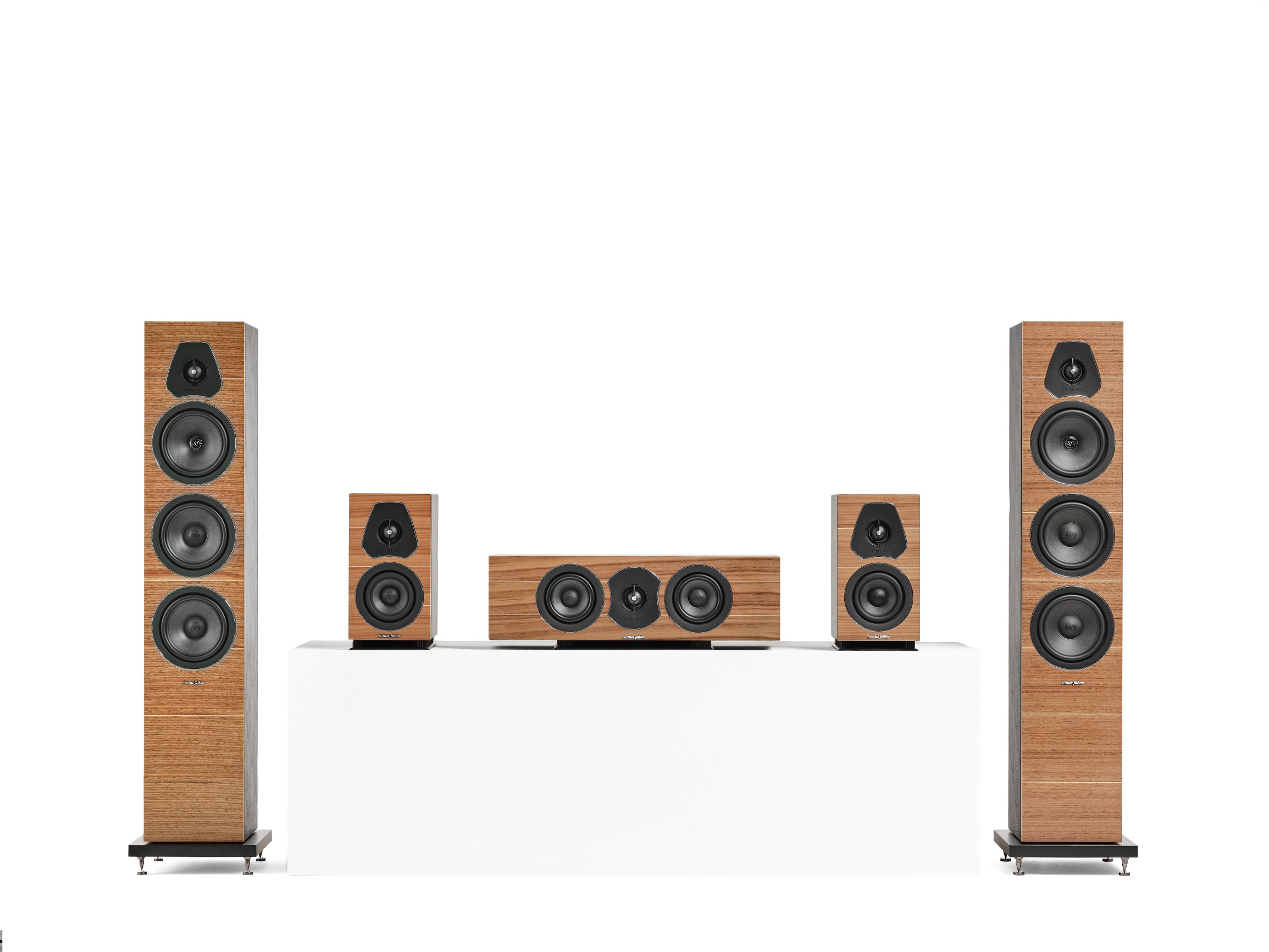
Sonus Faber was founded in 1983 by Italian engineer Franco Serblin. Born in Vicenzo and immensely proud of his country’s artistic heritage — including paragons of acoustic craftsmanship with names like Stradivari, Guarneri, Sellas and Tieffenbrucker who hand-built the best violins, violas, lutes and cellos the world had ever seen — Serblin sought to echo those master luthiers by crafting his own peerless instruments of sound.
“There’s a real rich tradition of amazing musical instruments in Veneto, and the idea of Sonus Faber was how to take that tradition of craftsmanship and instrument making and produce loudspeakers for musical enjoyment,” explains Jeff Poggi, CEO of Sonus Faber. “And so the brand really grew up focused on what we call natural sound — we really want to be able to produce the music as naturally as possible.”
Known for exceptional audio speakers of exceptional cost, this fall Sonus Faber is launching their first entry-level collection of speakers dubbed Lumina, containing compact bookshelf speaker (Lumina I) which we home tested to compliment a Polk Audio cinematic surround system; a powerful floor-standing model (Lumina III) optimized for games and movies; and a center channel speaker (Lumina Center I) option.
Like their flagship $250,000 speakers, the Lumina line is hand-built in northern Italy by master artisans using only the highest quality materials, all beautifully designed and engineered. And like all their speakers you can’t buy them online — Sonus Faber wants you to experience their cabinets firsthand before you plop over your credit card. That’s how much they believe in their product (see store locator). But unlike those six-figure speakers, however, you’ll be able to get your hands on the Lumina collection for much less — anywhere between $899 and $2,199.
Materials are famously important at Sonus Faber — rare woods, sumptuous leather, carbon fiber, chrome, etc. — as well as the handcrafted aspect. If you walk into the Bentley factory in England the wood and leather shop could almost be pulled out of an 18th century workshop. What’s the Sonus factory in Vicenza look like?
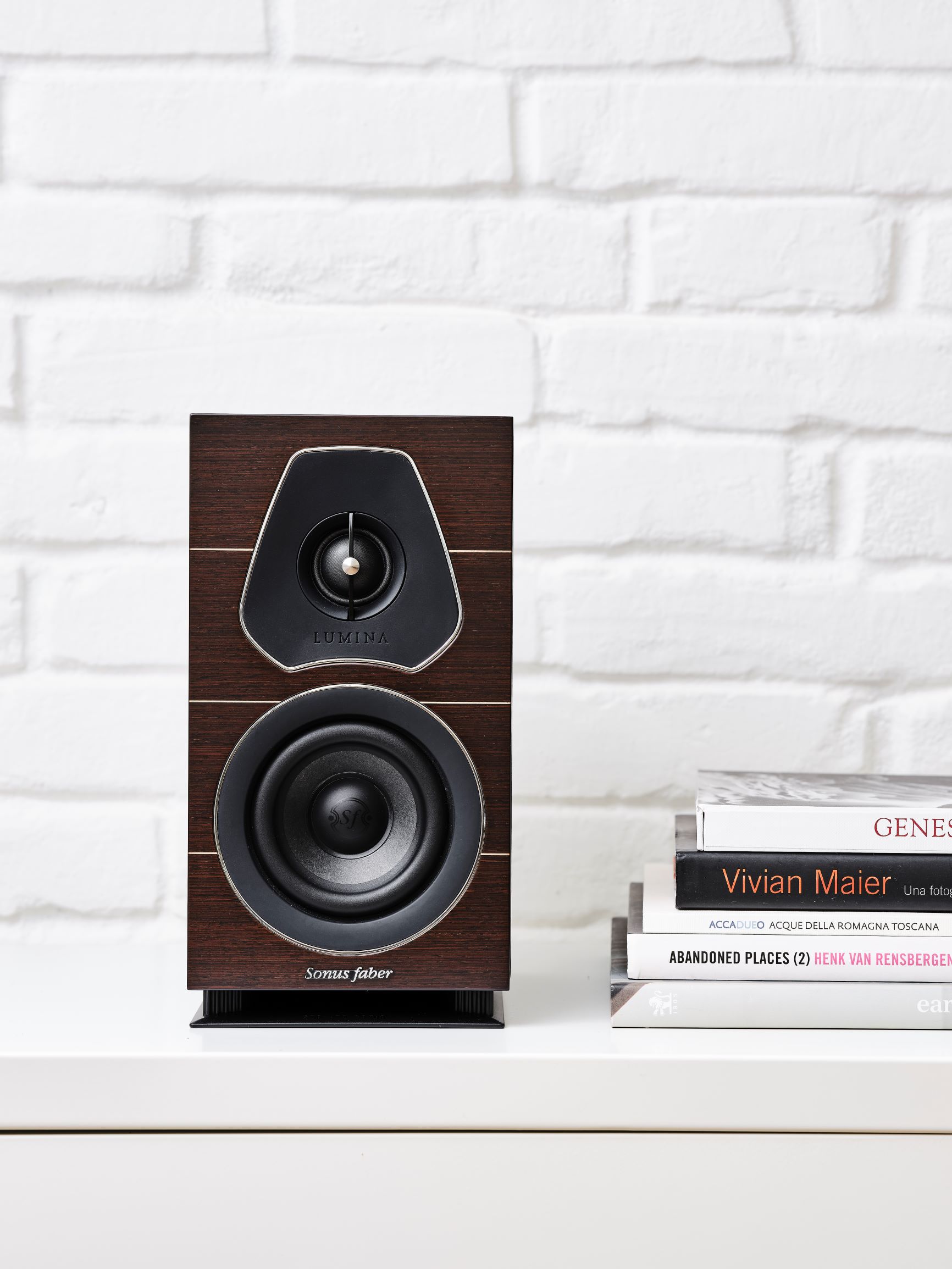
It’s more akin to going to Bugatti than it is a mass manufacturer. The factory is very old world, so there’s no automated assembly lines. There’s no large machinery or anything, it’s largely hand craftsmanship. So you will see lady stretching leather over a piece of wood using hand tools to fit it together. You’ll see men carrying the loudspeakers by hand and assembling the pieces of wood together using hand screwdrivers and nut drivers and things like that. We actually populate and solder the crossover networks by hand. So we have the quality that you would expect for very high quality, luxurious product, but actually the assembly process itself is very manual.
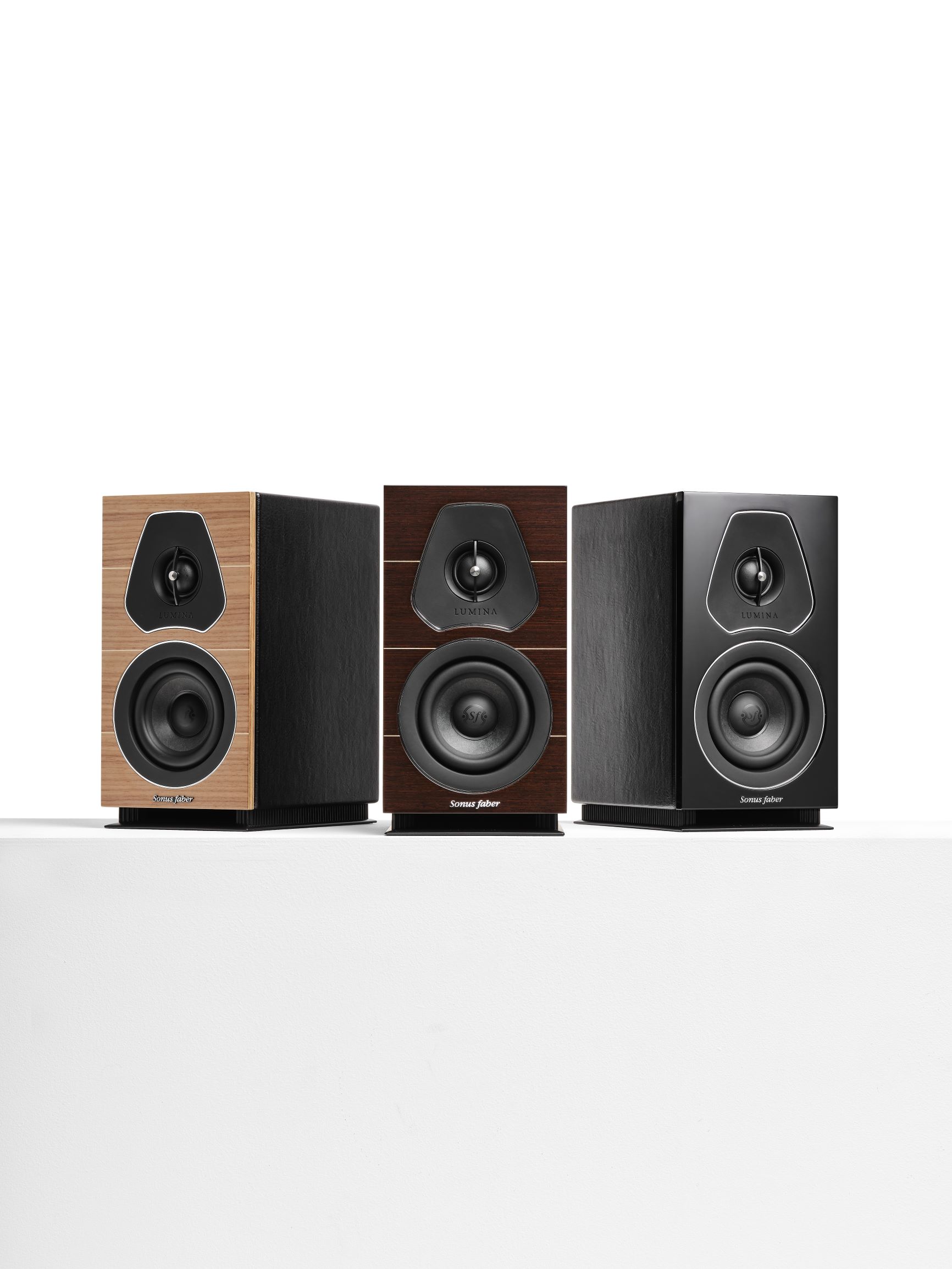
But we bring in the automation in the testing verification processes. So we have a very high technology acoustical testing system that tests for frequency response and distortion and output, calibrated microphone and a calibrated enclosure, etc.… And if you look at the design and development side of the company, which precedes the production, that’s also very high tech.
So we have our own inhouse design and engineering department that has a full acoustic anechoic chamber, we have multiple listening rooms that we’ve designed with room acoustic specialists so that we can have proper evaluations. And then we have all the engineering modeling, CAD cam software, et cetera, to be able to do the design work that’s proper for enclosures. Designing port structures, modeling cone material, modeling the motor design of the actual transducer, et cetera.
So the highest level of technology is used in designing and acoustic engineering, CADing, and testing. But the actual production is much more of an artisanal quality.
Exactly. Perfect.
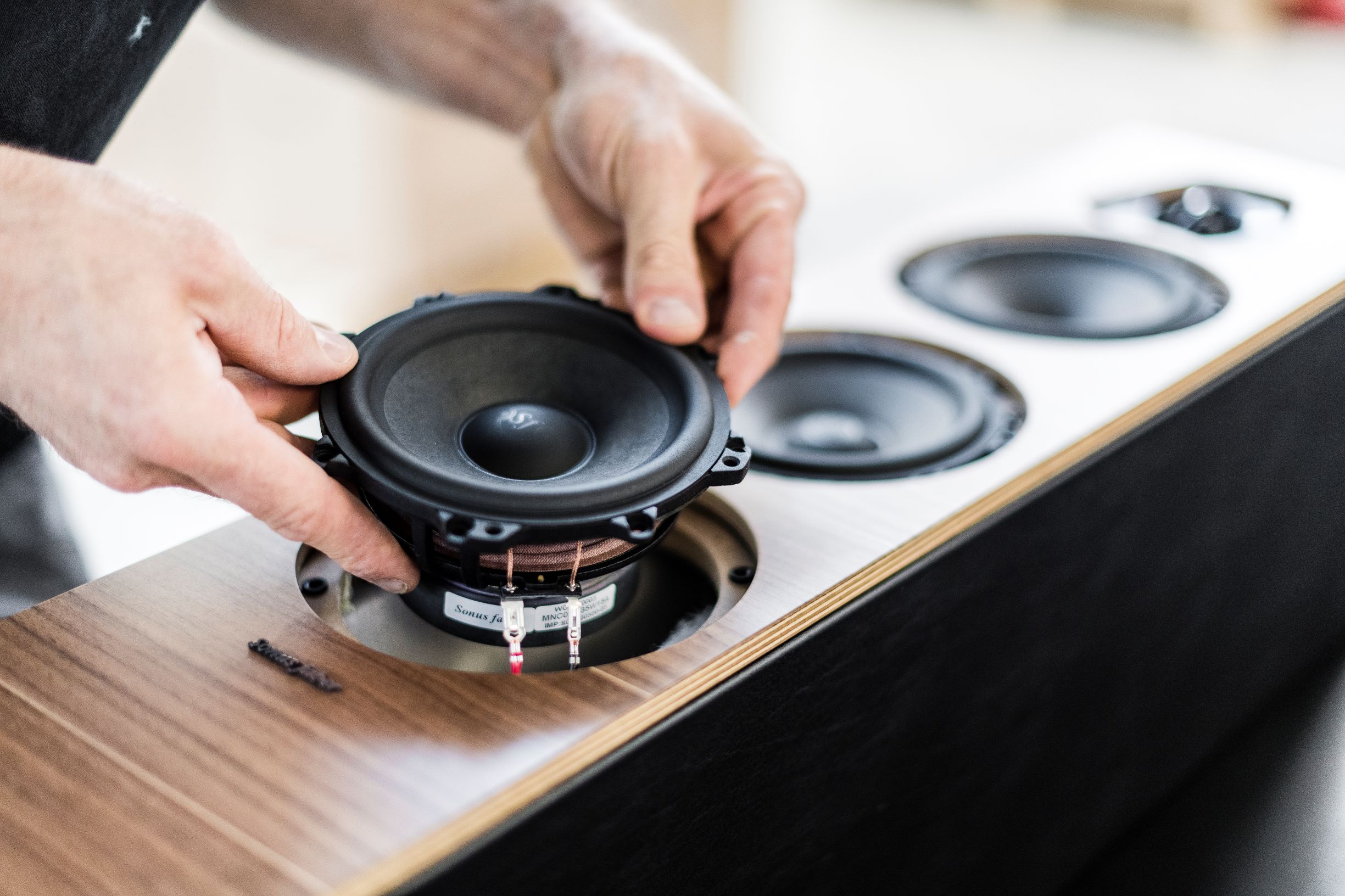
First let’s start with your flagship line of speakers.
The line starts at the top with The Sonus Faber, which is the product that embodies our name the best. It’s a quarter of a million dollars a pair. First-generation was I believe 2013, second generation is 2017. It’s a very large product, roughly seven feet plus tall. It has very high technology: all of the transducers it uses are diamond-like carbon beryllium dome tweeters. There’s carbon fiber elements, [cross grained okumè] wood elements, there’s a huge mass dampening system to basically cancel all of the internal resonances in it. It has almost a big spring system built inside of it, which is quite, quite impressive.
Sonus Faber has firmly established its ultra-lux laurels, but the market for $250,000 speakers is limited. So now you’re introducing a new entry-level Lumina line, a first for the company.
We conceived this product with the idea of trying to bring all of the core Sonus Faber brand DNA to its most simplest form, so that we could expand the reach of the brand into a new customer base. This is a product that we envisioned will be great for millennials, Gen Z, younger and maybe condo or apartment living, with smaller rooms but with a good sense of wanting authentic experiences. Wanting to really enrich their everyday life with something that is a high fidelity, high-performance loudspeaker. In a really simple, minimalistic form factor, but still represents all of the Sonus Faber DNA of the natural materials that we use: leather, [walnut and maple] wood, our D.A.D. (Damped Apex Dome) tweeter technology, silk dome tweeter, stealth reflex port. It’s got all of these core acoustics that can make it sound wonderful, but it’s in a really simple package which allows us to then make it more affordable.
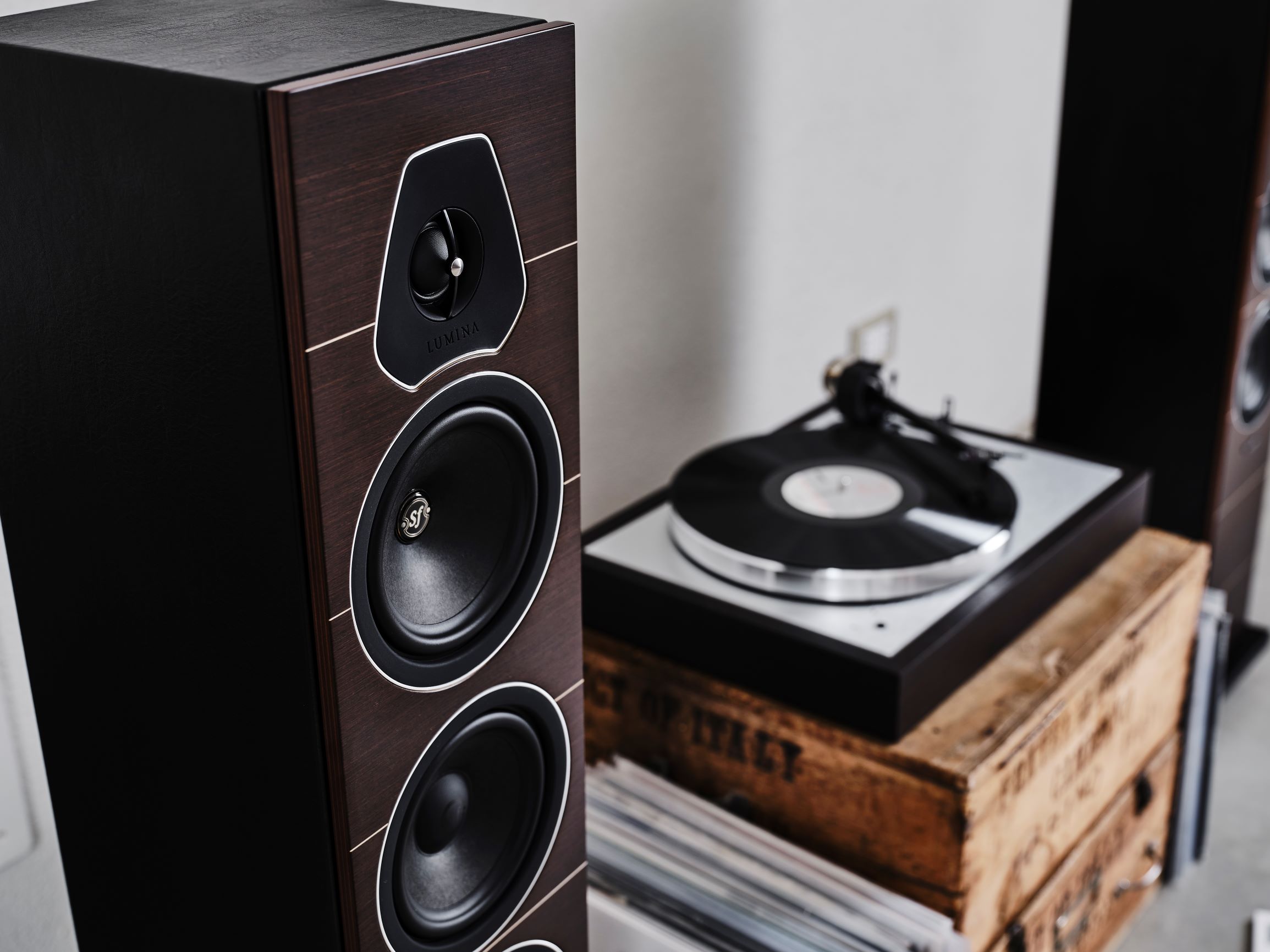
The speaker is gorgeous, beautiful materials, and the sound is deep and clear — so there’s no degrading aesthetically from what would be a traditional Sonus Faber speaker. How did you make it more affordable?
This is where the engineers have to work hard because when you give them a quarter of a million dollar budget it’s actually easier to design a product. When you give them a $799 price point to hit for a bookshelf loudspeaker, it’s actually harder sometimes because you want to live the brand characteristics. But the big innovation here for us — one of the things we did that enabled us to hit the required price point — was a simple rectangular form factor. So our [walnut, maple and wenge] wood, the cost of producing the wood, is more simple by having that square cross section.
If you look at all the other Sonus Faber speakers, we have a radius, or a profile, that has curved sides. And the reason we have that is if you go back to looking at a violin or a viola, you have these rounded, organic shapes. And that actually has a purpose acoustically where, when you don’t have square edges, you have less back wave of cancellation within the cabinet of the loudspeaker — just like you’d have in the cabinet of a musical instrument. We were the first company to ever actually have these rounded edges on a speaker cabinet many years ago, and that just became part of our line once we discovered that. So this is the first time we haven’t done [rounded edges], and that was one of the key ways we were able to take cost out of it. But it required the engineers to do a lot of modeling to figure out the right proportions — length, width, height, et cetera — and then design the port in the right way in order to make that the best possible cabinet they could.
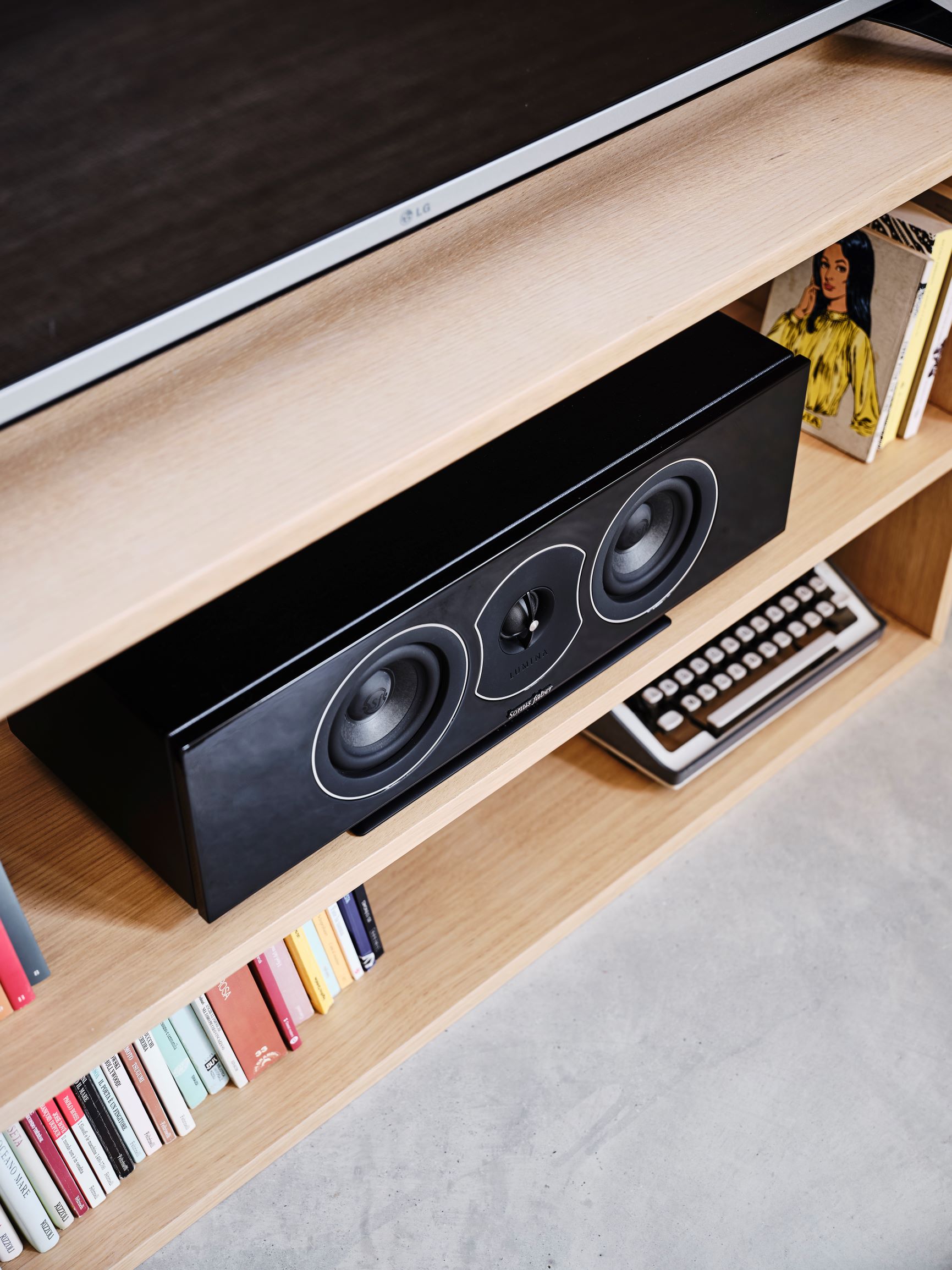
Lumina is just coming to market this month — where can you purchase it?
So as we come to market right now in the US we are sold through specialty retailers. We have approximately 70 retailers across the US that will sell this line of loudspeakers. And it’s not actually sold online, which is maybe counterintuitive in today’s day and age, but one of the things that we still value is that human touch and the ability for a consumer to actually have an experience with the dealer. To be able to listen, to experience the products before they bring it home. Because it is something that you generally want to hear before you purchase, even at the $799 price point that’s still a pretty good amount of money to pay. Most people, we think, will want to touch it and feel it before they bring it home.
Are showrooms open during the COVID era? Is it harder for people to come in and actually experience the brand?
Well, it’s interesting. Each state and each dealer are handling it a little differently, but we have adopted so we can deliver directly from our warehouse to the end customer if the customer doesn’t want to go into the showroom, or the dealer’s not open. We’ll distribute directly to the customer’s house so we can take that burden away. But at the same time dealers have pretty much, across most of the states, moved to an invitation or at least an appointment. So you call up the dealer, you can book a time so that you can go down there in a safe environment with proper social distance and have a private demo yourself without there being any congestion.
I think it started to work out pretty well, and actually the business has been doing very, very well across the summer. There seems to be quite a bit of this cocooning effect that’s going on where consumers are not going out to dinner, they’re not going out to movies, they’re not going to live concerts. They’re not going on large locations and they’re spending a little more time at home and therefore investing in their homes. And it seems to be musical systems are part of that investment, because right now we’re finding more consumers enjoying Sonus Faber than we have in the past.
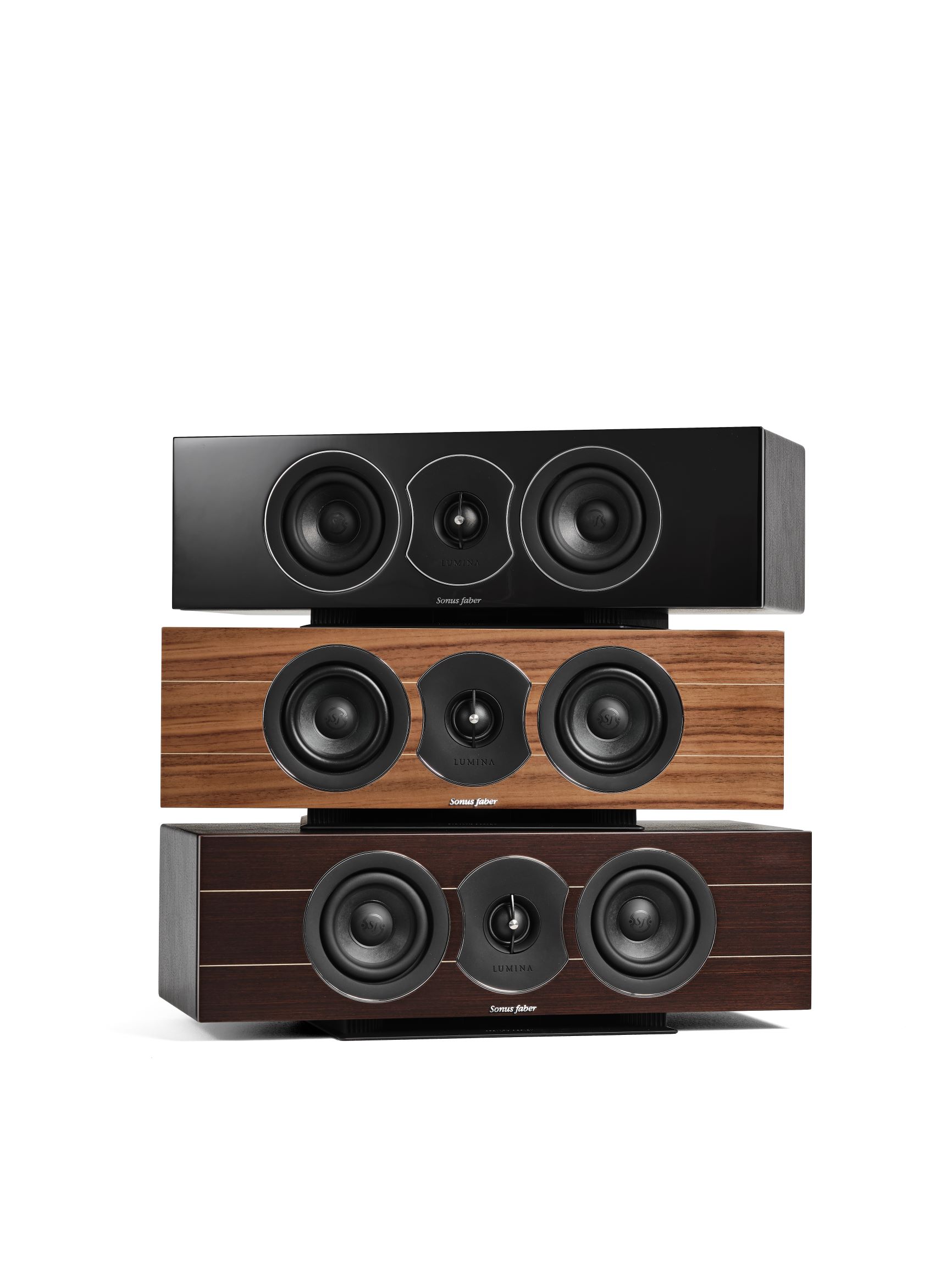
That’s actually a really interesting point: people are not spending a ton of money on restaurants or bars, everyone’s staying home. You’re learning to mix cocktails at home, you’re buying a bigger TV and commensurate with that you want a good sound system to power the experience.
Yeah. I would not have expected, six months ago, to say that the summer of 2020 was going to be the best summer of our business, which it has been. And we’re happily constrained sometimes now in production because the demand has been so hot. It’s a good situation to be in.
